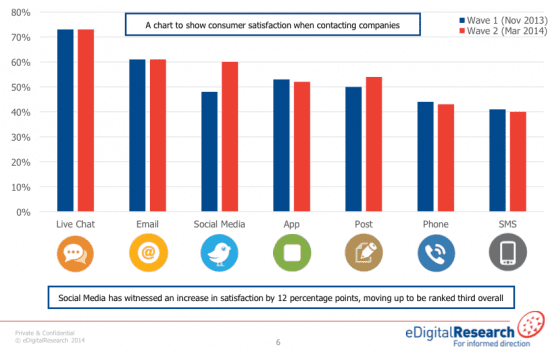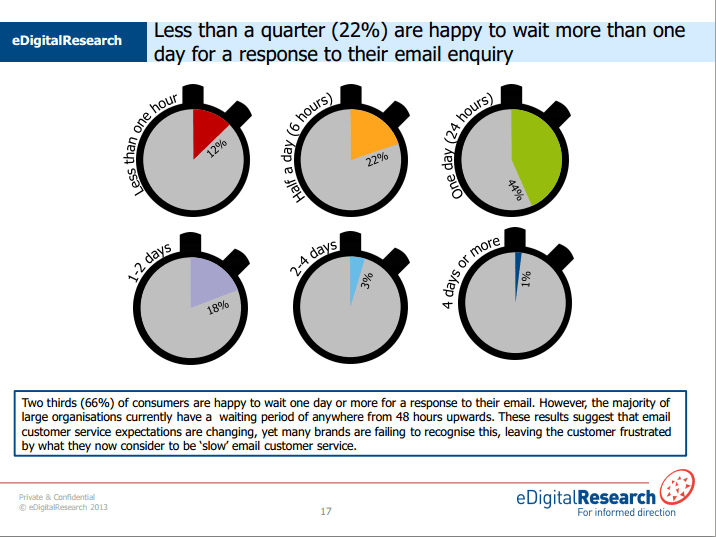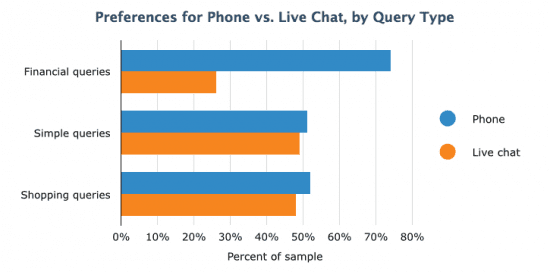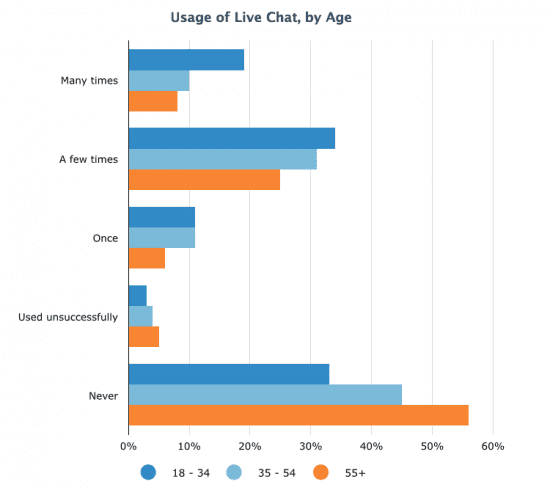New research shows the popularity of Online Customer Service including Live Chat, Social Media and Email
Improving customer service can be the answer for many companies to stand out in the crowd, as they trade in competitive environments with increasing customer expectations. Omnichannel customer care is being recognised by retailers, as the number of customer communication channels are increasing, as consumers are buying products and services. Consumers are contacting companies via traditional methods of the phone, in-store face to face contact and via social media such as Tweeting and Online chats.
What is the preferred method of contact for goods bought in-store?
Retailers know that customer service at every touchpoint, regardless of the communication method, must provide a positive experience every time so they don't lose sales or damage their brand. But which are the customer care channels they need to offer and how do they compare?
The research highlights the popularity of online customer service, particularly Livechat and Email with social media rising in satisfaction levels.
1 in 4 (26%) consumers have used live chat to contact a company in the last year – 73% of whom said that they were ‘satisfied’ or ‘very satisfied’ with the experience they received via the touch point.

There has been a rise in satisfaction in those consumers using social media to contact brands. While the number of customers getting in touch with these brands via this method is still low (1 in 10 have used social media to contact a company in the last year), brands who do offer customer service via this channel are becoming increasingly more proactive when it comes to managing expectations, often posting average wait times and operating hours.
Unsurprisingly, phone and SMS are currently the lowest rated customer service touch point. Analysis shows that only 43% and 40% of consumers respectively were satisfied when using these touch points. When contacting a brand via the phone, 1 in 5 (18%) consumers will not contact a company if they only offer a premium rate telephone number.
Is there a response time which consumer's expect, for follow-up to their emails?
In terms of follow-up to emails, consumer's expectations are high where less than a quarter would wait more than 24 hours for a response. Are you setting your SLAs to 24 hour turnaround for enquiry handling?

You can access the full Customer Service Benchmark's Report from eDigitalResearch (Registration required) and we have our own Online customer Care Hub, providing more resources on this topic.
How popular is Live Chat with different ages?
More insights on the popularity of LiveChat are available from this research from Software Advice. They explain the reason behind the research:
"Live chat, as a customer service channel, has been around for at least a decade. Given this, we're often surprised at the number of B2C websites that still don't offer live chat. This surprise was the impetus behind this new survey. We wanted to learn more about consumers' opinions of live chat as a customer service channel and see if the survey data could make a case in support of it as a customer service channel. Sure enough, it does, and strongly".

Regardless of customer demographics or the nature of the service inquiry, a significant portion of the general public always prefers live chat to phone support. For this reason alone— not to mention others like cost effectiveness and operational efficiency— businesses that don't have live chat on their websites now would be wise to at least consider adding it.
Live chat popularity by age
Drilling down into the popularity of live chat amongst different age groups we can see that it is more popular in younger age groups as you might expect.

The greater popularity of Livechat in younger age groups suggests how its popularity will grow.










